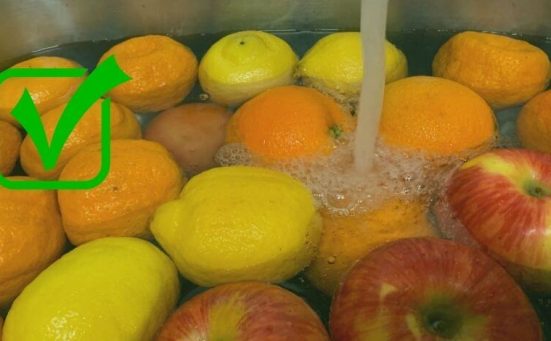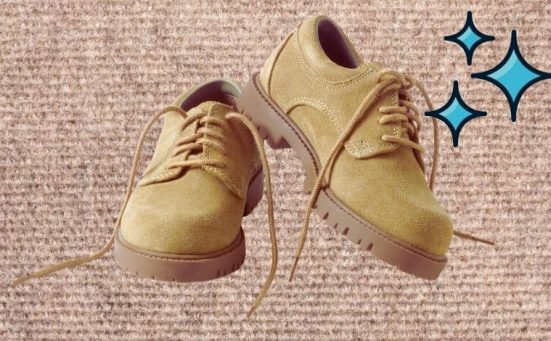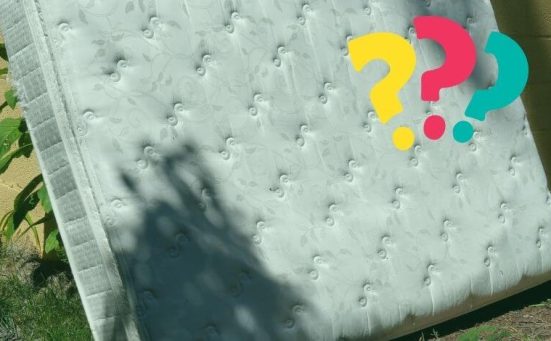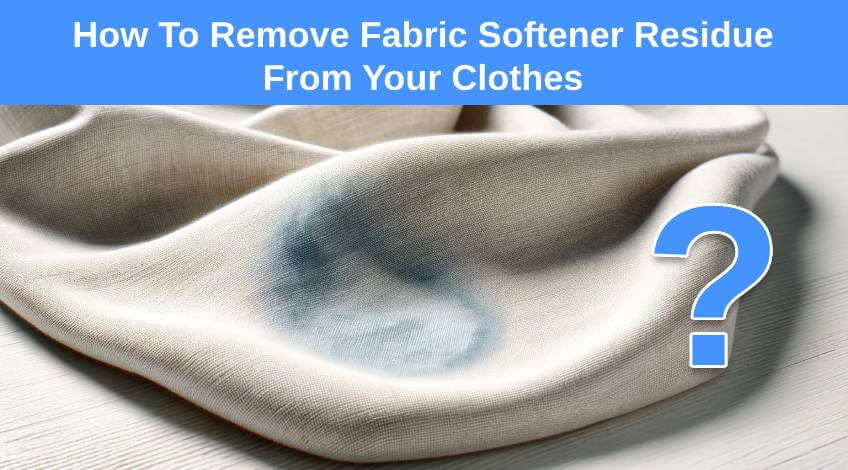
How To Remove Fabric Softener Residue From Your Clothes
Although fabric softener is an awesome product that makes our clothes soft and fragrant, it can sometimes leave behind an unwelcome residue. This residue not only dulls the appearance of your garments but can also affect their texture and absorbency, making them more difficult to clean and may even result in foul odours.
Thankfully, using household products such as washing up liquid, liquid detergent, or white vinegar, and with a bit of scrubbing, those stains will be gone.
In this article, we’ll teach you the most effective methods for removing fabric softener stains, why they happen, and how to prevent them.
How to Remove Fabric Softener Residue
If you’ve noticed your clothes feeling less than fresh and there are stains on them after a wash, it’s time to tackle the issue as soon as you can. But why is fabric softener staining your clothes?
Fabric softener residue is typically the result of using it incorrectly during the washing cycle or using too much.
Fabric softeners work by coating fibres with a thin layer of chemicals to make them feel softer and reduce static cling. Over time, this coating can build up, leaving clothes feeling greasy or less absorbent. The residue is noticeable as a filmy, sticky layer on the fabric that may attract dirt and lock in bad odours.
Here are the most effective ways to remove the stains:
Step 1: Warm Water Wash
Start by washing your clothes in the hottest water safe for the fabric as the heat will help dissolve the fabric softener residue.
TIP: Make sure to check the care label of your garment to know the maximum temperature it can stand.
Slightly dampen the fabric using warm water. Then, put detergent or washing-up liquid on the stain and let it sit for at least 30 minutes. Scrub the area using a soft-bristled brush, and then wash as normal.

You can use your washer’s hot temperature to get rid of the stains. For this step, it’s normal for light stains to be gone after a warm wash, and you may not need to do the next steps. If this is the case and the stains are gone, proceed to air drying your garment.
Step 2: Soak The Fabric
If scrubbing the stain with liquid detergent or washing up liquid didn’t remove the stains completely, you’ll need to soak your clothing in the solution to allow it to have deeper access to the stains.
Fill a bucket or basin with warm water and add half a cup of distilled white vinegar, then soak the stained clothing for at least an hour.
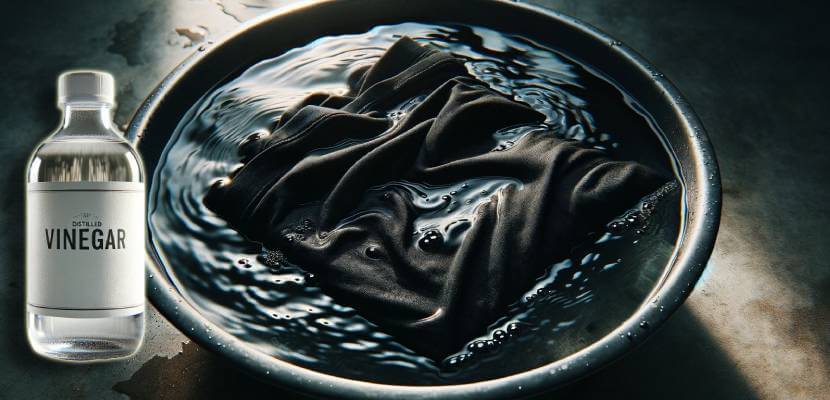
Once it’s done soaking, wash your garment as usual using a hot cycle. For stubborn residues, add half a cup of bicarbonate of soda to the wash cycle along with your regular detergent. Bicarbonate of soda enhances the detergent’s cleaning power and helps to remove the residue.
If all the stains are removed, skip the tumble dryer and air dry it instead.
DID YOU KNOW? Distilled white vinegar is a great fabric softener alternative! It leaves clothes soft, and vibrant, and will even make them smell fresh due to its disinfecting properties.
Step 3: Use A Tougher Product
If you’ve already done Steps 1 and 2 and the fabric softener stains have hardly budged, it’s time to get serious and use a specialised product. This method is also effective if the stain has already dried into the fabric.
Fill a bucket or basin with warm water and add oxygenated bleach. Make sure to read the instructions on the product and only put the recommended amount depending on the water you’re using.
- Platinum Oxi Action formula goes deep into the fibres to give you dazzling whites even after 50 washes
- Removes tough stains and odours even at 30°C
Then, allow the fabric to soak for at least 3 hours. Wash it using a hot cycle without adding detergent or other laundry products, then check if all the stains are removed. If so, air dry the garment.
If the first wash doesn’t remove all the residue, repeat the process. Sometimes, heavy build-up may require a few washes to completely remove.
TIP: Air dry your garments when treating them, as the high heat from the tumble dryer can sometimes set the residue, making it harder to remove.
Preventing Fabric Softener Residue
Fabric softener residue may be easy to remove using the methods above, but why deal with them when you can prevent them from happening, right?
Here are the things you can do to stop staining your clothes:
Use The Right Amount Of Softener
Often, we may think that using more laundry products would result in fresher and cleaner clothes. Unfortunately, this is not the case.
The simplest way to prevent residue build-up is to use less fabric softener or dilute it with water before adding it to your wash.

Make sure to read the instructions on the product and follow the recommendations on how much you need to use. Remember, not all products have the same strength and some may be more concentrated.
Switch To Natural Alternatives
White vinegar is a natural alternative to fabric softener.
Just add one to two cups of white vinegar to the rinse cycle instead of fabric softener, and your clothes will be fluffy and fragrant. And the best part? No residue.
TIP: Wool dryer balls are also great alternatives for keeping your clothes soft and fluffy!
- SUPERIOR QUALITY WOOL: 100% New Zealand premium wool with no synthetic fillers, rolled into tight, extra-large balls and felted for a natural, long lasting product
- REUSABLE FABRIC SOFTENER: Replace chemically infused dryer sheets and liquid fabric softeners with a natural alternative that will last more than a thousand dryer loads
Clean Your Washing Machine
Regularly clean your washing machine to prevent it from transferring fabric softener residue to your clothes.
Run an empty wash cycle with hot water and two cups of white vinegar, followed by a rinse cycle to clean the machine. Clean the detergent dispenser with a damp cloth and warm water to remove any residue.
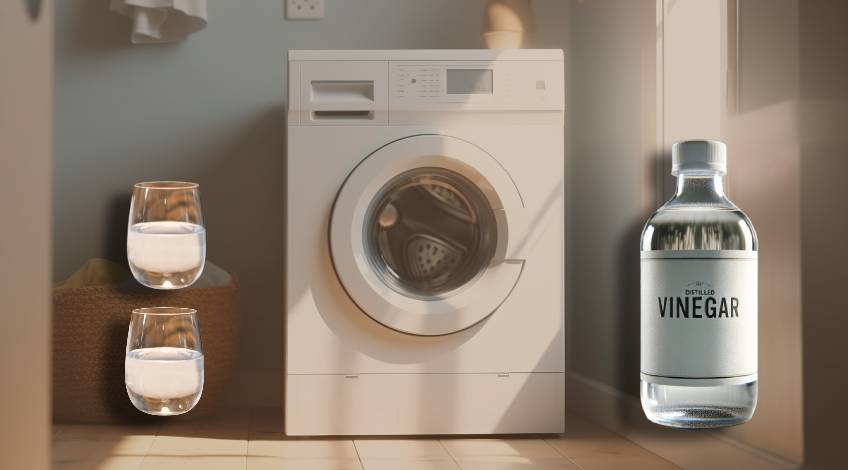
By following these steps, you can effectively remove fabric softener residue from your clothes and prevent future build-up, ensuring your garments remain fresh, soft, and fragrant.
Do you have questions? Ask away!
SEE ALSO: How To Use White Vinegar In The Washing Machine (and why!)
Frequently Asked Questions
Yes, fabric softener does get rinsed out of clothes, but not always completely. If used correctly and in the right amount, it should mostly wash away during the rinse cycle. However, using too much fabric softener or not using the washing machine correctly can result in residue remaining on the garments.
If you use too much fabric softener, it can leave a residue on your clothes. This residue can dull the appearance of your garments, affect their texture and absorbency, and make them more difficult to clean. Over time, it may also attract dirt and lock in bad odours.
Yes, white vinegar can remove fabric softener residue from clothes. Adding half a cup of distilled white vinegar to your wash cycle can help dissolve and wash away the residue, leaving your clothes soft, vibrant, and fresh-smelling without the unwanted buildup.
To remove fabric softener stains after clothes have been dried, soak the affected garments in warm water with a solution of liquid detergent or washing up liquid, or use a specialised product like oxygenated bleach according to the product’s instructions. Washing in a hot cycle after soaking may be necessary to completely remove the residue, especially if the stains have been set by the dryer.
Yes, there is a natural fabric softener option—white vinegar. Adding one to two cups of white vinegar to the rinse cycle of your wash can serve as a natural alternative to commercial fabric softeners, effectively softening clothes without leaving any residue. Wool dryer balls are another natural alternative that can keep your clothes soft and fluffy during the drying process.
Also, follow us on Pinterest ...



